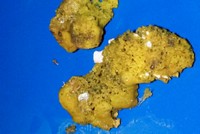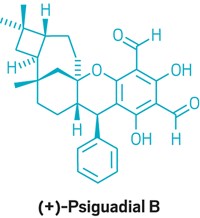Advertisement
Grab your lab coat. Let's get started
Welcome!
Welcome!
Create an account below to get 6 C&EN articles per month, receive newsletters and more - all free.
It seems this is your first time logging in online. Please enter the following information to continue.
As an ACS member you automatically get access to this site. All we need is few more details to create your reading experience.
Not you? Sign in with a different account.
Not you? Sign in with a different account.
ERROR 1
ERROR 1
ERROR 2
ERROR 2
ERROR 2
ERROR 2
ERROR 2
Password and Confirm password must match.
If you have an ACS member number, please enter it here so we can link this account to your membership. (optional)
ERROR 2
ACS values your privacy. By submitting your information, you are gaining access to C&EN and subscribing to our weekly newsletter. We use the information you provide to make your reading experience better, and we will never sell your data to third party members.

Using only 15 chemical transforms, scientists at Caltech have managed to construct the complex molecule (+)-ryanodol starting from (S)-pulegone, a commercially available terpene. That’s a dramatic reduction in step count compared to the previous ryanodol-synthesis record of 35 steps, held by the University of Tokyo’s Masayuki Inoue.
“Today, the emphasis in total synthesis of complex natural or nonnatural products is to discover a strategy that will allow us to make the product in a minimum number of steps,” says Pierre Deslongchamps, the University of Sherbrook chemistry professor who reported the first ryanodol synthesis in 41 steps in 1990. “Indeed, to succeed in the synthesis of ryanodol in 15 steps is absolutely remarkable.”
Ryanodol is a hydrolyzed derivative of the natural product ryanodine, an insecticidal molecule that comes from the tropical shrub Ryania speciosa Vahl. Hydrolysis converts a pyrrole ester in ryanodine to an alcohol in ryanodol. Ryanodine, and to a lesser extent ryanodol, target certain calcium ion channels—known as ryanodine receptors—which are important for movement and cognition.
Analogs of ryanodol, made possible by this short synthesis, could be useful as biological probes for studying these receptors. Kangway V. Chuang, Chen Xu, and Sarah E. Reisman presented the work at the American Chemical Society national meeting in the Division of Organic Chemistry on Sunday and published a report on the work in Science today (DOI: 10.1126/science.aag1028).
Ryanodol’s five rings and multiple alcohol groups make it particularly challenging to construct, Reisman says. In devising their strategy to make (+)-ryanodol, Reisman and her group envisioned doing a Pauson-Khand reaction as a key step. This method of constructing five-membered rings via the cycloaddition of an alkene, an alkyne, and carbon monoxide, Reisman says, helped the chemists deconstruct ryanodol to a much more tractable target.
Another key step, she points out, was a selenium dioxide oxidation that unexpectedly performed three oxidations at once. “I think that if I had proposed that oxidation in a grant proposal it would not have been funded,” Reisman says. But by studying some minor by-products they originally saw when they first tried the oxidation, the chemists were able to generate much of ryanodol’s complexity in a single step.
“The alignment of the 15 reactions in this synthesis is highly optimized and sophisticated and clearly demonstrates the ingenuity of the strategic design by the Reisman group,” Inoue comments.
“At the strategic level, it is difficult to imagine a more concise approach,” adds Jeffrey S. Johnson, an expert in organic synthesis at the University of North Carolina. “It is always a feat to improve upon a multistep synthesis. To cut the step count by more than half on such a challenging target is rare, exciting, and enabling.”




Join the conversation
Contact the reporter
Submit a Letter to the Editor for publication
Engage with us on Twitter